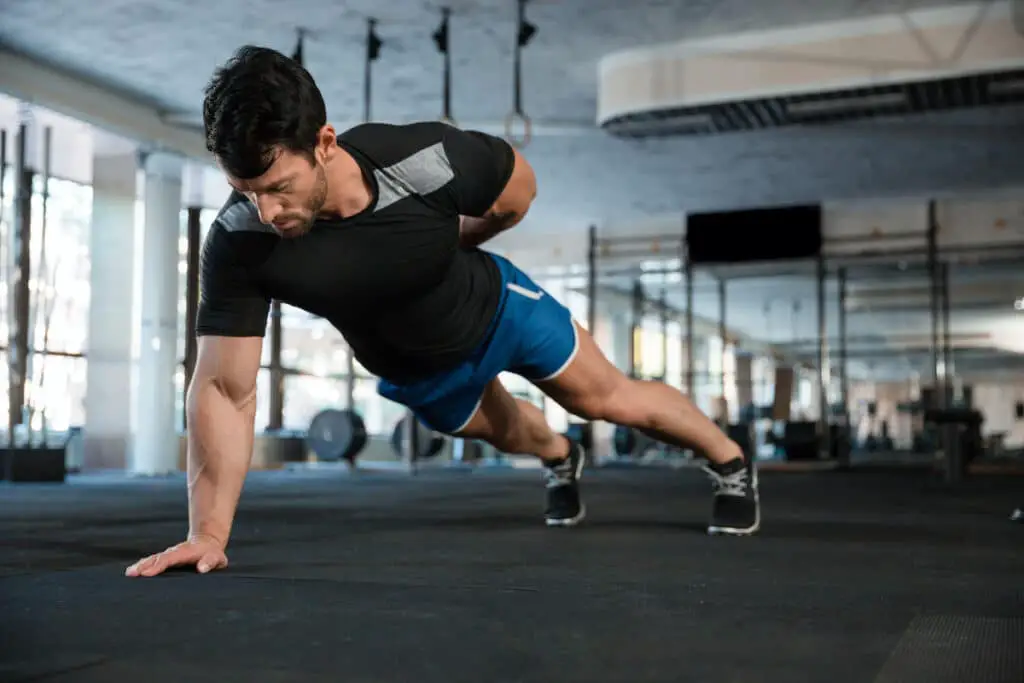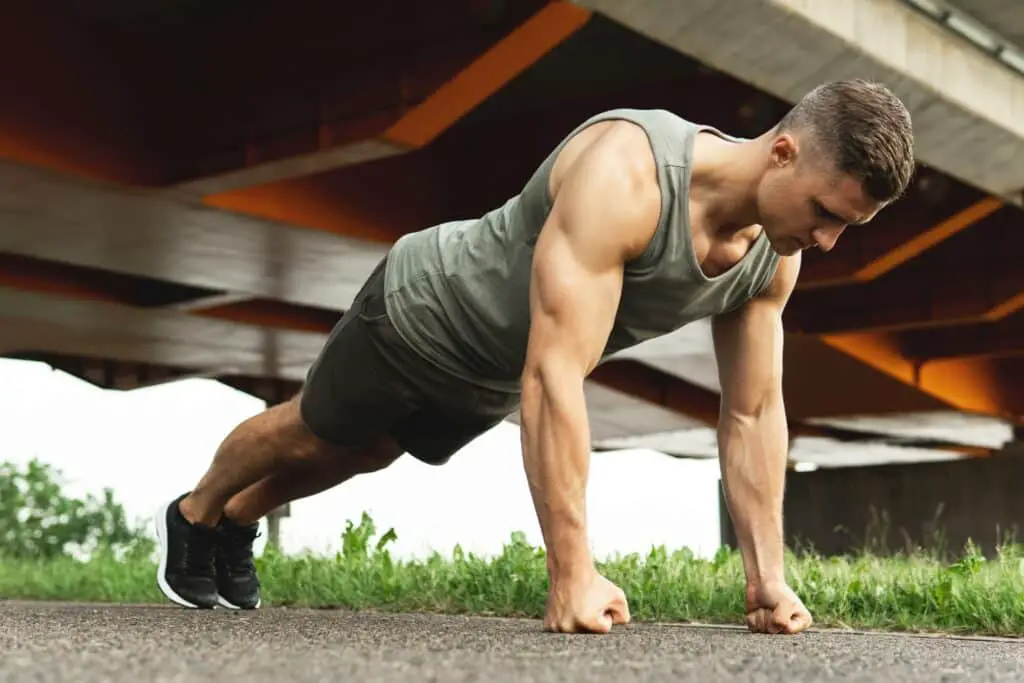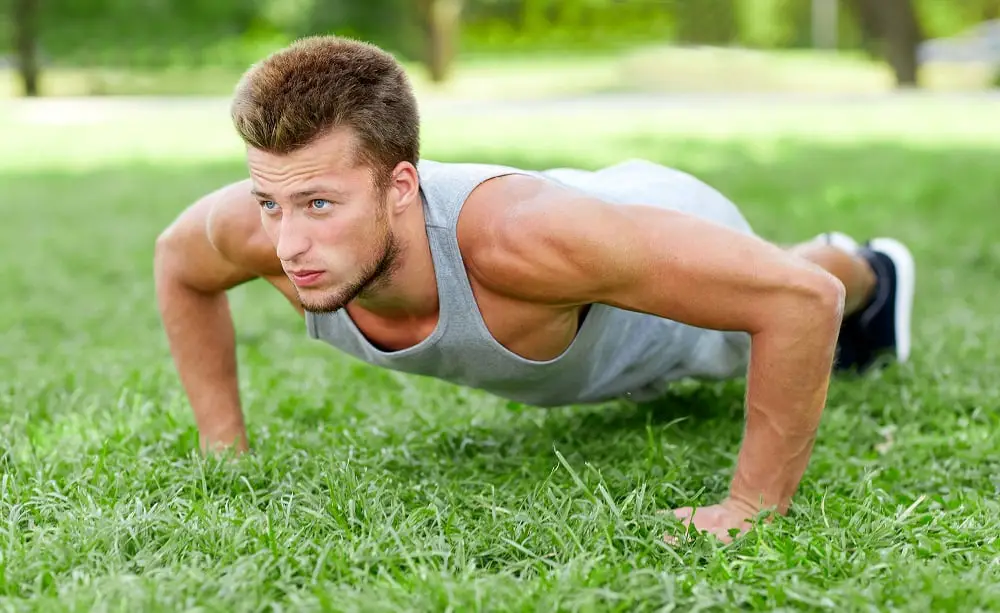Introduction
Are Push Ups Calisthenics: Push-ups are indeed a fundamental and quintessential exercise in the world of calisthenics. Calisthenics, often referred to as bodyweight training, is a discipline that relies on using your own body weight as resistance to build strength, enhance endurance, and improve overall fitness. Push-ups perfectly embody the essence of calisthenics, as they require no equipment other than your body, making them accessible to virtually anyone, anywhere. In this exploration of push-ups within the realm of calisthenics, we will delve into the versatility and benefits of this classic exercise. Push-ups are renowned for their ability to target multiple muscle groups simultaneously, particularly the chest, shoulders, triceps, and core.
Various push-up variations, from traditional to advanced, and discuss how they can be tailored to suit individual fitness goals, whether it’s building upper body strength, achieving better muscular endurance, or mastering impressive bodyweight skills. Push-ups serve as a foundation for calisthenics, offering both beginners and seasoned practitioners an essential tool for building strength and achieving a well-rounded physique. Push-ups, as one of the fundamental exercises in calisthenics, embody the principles of this bodyweight training discipline. Calisthenics, derived from the Greek words “kallos” (meaning beauty) and “sthenos” (meaning strength), focuses on enhancing physical prowess while promoting grace and aesthetics. Push-ups align perfectly with these principles.
In the world of calisthenics, push-ups are not just a simple exercise but a versatile and challenging movement. They engage multiple muscle groups, foster functional strength, and offer a pathway to mastering advanced bodyweight skills. From standard push-ups to one-arm push-ups, planche push-ups, and even handstand push-ups, the progression possibilities are endless. Push-ups require no special equipment, making them accessible to people of all fitness levels. Whether you’re a beginner seeking to build a foundation in calisthenics or an advanced practitioner aiming to elevate your skills, push-ups remain a cornerstone of your training regimen. This exploration of push-ups within calisthenics will delve into the variations, benefits, and techniques that make them an essential component of bodyweight training, helping you unlock the full potential of your own body in pursuit of strength, aesthetics, and overall fitness.

Are push-ups considered calisthenics?
Calisthenics is a form of exercise that uses a person’s body weight and requires little to no equipment. Examples of calisthenic exercises include push ups, crunches, and burpees. There are many health benefits to calisthenics, and most people can start exercising right away.
Yes, push-ups are considered a classic calisthenics exercise. Calisthenics, also known as bodyweight training, involves using your own body weight as resistance to build strength, improve endurance, and enhance overall fitness. Push-ups fit this definition perfectly, as they require no equipment other than your body.
Push-ups are a versatile and effective calisthenics exercise that engages multiple muscle groups, particularly the chest, shoulders, triceps, and core. They can be modified to accommodate different fitness levels, making them accessible to beginners and challenging for advanced practitioners. Variations of push-ups, such as diamond push-ups, one-arm push-ups, and plyometric push-ups, can provide progressive challenges within the realm of calisthenics.
How many pushups for calisthenics?
The goal that you should strive for in calisthenics before moving onto the advanced exercises is 10 strict form pull ups, 15 strict form dips, and 20 strict form push ups. The common ground is a strict form, without swaying or rocking your body to complete the movement.
Goal for push-ups in a calisthenics context is often around 20 strict form push-ups. This means performing push-ups with proper form, without swaying, rocking, or using momentum to complete the movement. Achieving this level of proficiency in push-ups demonstrates a solid foundation of upper body strength and endurance, which is valuable in calisthenics.
The specific number of push-ups you should aim for may vary based on your individual fitness level and goals. Some individuals may reach this milestone sooner, while others may require more time and practice. The key is to focus on proper form, gradually increasing your repetitions, and working towards your own personal fitness objectives within the realm of calisthenics.
What type of exercise is calisthenics?
Calisthenics is a form of strength training that uses the resistance of your body and gravity to help strengthen your muscles and improve your coordination, endurance and mobility. In fact, almost all common bodyweight exercises are calisthenics exercises such as squats, push-ups, lunges and crunches.
Calisthenics is a form of exercise that primarily uses the resistance of your body and gravity to build strength, increase muscle tone, improve coordination, boost endurance, and enhance overall mobility. It involves performing a variety of bodyweight exercises that target different muscle groups.
Common calisthenics exercises include:
Push-ups: Strengthen the chest, shoulders, and triceps.
Squats: Work the muscles of the legs, including the quadriceps and glutes.
Lunges: Target the legs and help improve balance.
Pull-ups: Strengthen the back and biceps.
Planks: Engage the core muscles for stability.
Dips: Work the triceps and chest.
Burpees: A full-body exercise that combines squats, push-ups, and jumps.
Calisthenics exercises are often performed using your body weight as resistance, and they can be modified to suit various fitness levels, making them accessible to beginners and advanced individuals alike. Calisthenics can be performed with little to no equipment, making it a convenient and cost-effective way to stay fit and build strength.
Are calisthenics the healthiest?
Calisthenics: Types, Benefits, Importance and Research
As a form of exercise, calisthenics is a perfect way to achieve healthy longevity. Not only will it build up your functional strength, but calisthenics also reduces stress on your joints, resulting in a longer lifespan of joints. As you know, our bones and joints become fragile when we age. Calisthenics can be considered one of the healthier forms of exercise for various reasons.
Functional Strength: Calisthenics promotes functional strength, which means it enhances your ability to perform everyday movements and activities. This functional aspect of strength can improve your overall quality of life and help prevent injury.
Joint Health: Calisthenics exercises often involve natural, bodyweight movements that are easier on the joints compared to heavy weightlifting. This can contribute to the long-term health and longevity of your joints.
Flexibility and Mobility: Many calisthenics exercises incorporate elements of flexibility and mobility, which can improve your range of motion and reduce the risk of stiffness as you age.
Minimal Equipment: Calisthenics requires little to no equipment, making it accessible and affordable for most people. You can practice calisthenics anywhere, promoting a consistent fitness routine.
Stress Reduction: Like any form of exercise, calisthenics can help reduce stress, improve mental well-being, and contribute to a healthier and longer life.
What should I eat for calisthenics?
This means that you should consume whole foods like lean proteins such as chicken, turkey, lean ground beef, beans and legumes, salmon, tofu, eggs, etc. Protein helps repair and build lean muscle after exercise. This will increase muscle mass and strength which is essential for progressing in calisthenics. Eating the right foods to support your calisthenics training is essential for optimal performance and results.
Lean Proteins: Protein is vital for muscle repair and growth, which is crucial for progressing in calisthenics. Include lean sources of protein such as chicken, turkey, lean ground beef, fish (like salmon), tofu, tempeh, legumes (beans, lentils), and eggs. Aim to have protein in each of your meals to support recovery and muscle development.
Complex Carbohydrates: Carbohydrates provide the energy you need for your workouts and daily activities. Opt for complex carbohydrates like whole grains (brown rice, quinoa, whole wheat pasta), starchy vegetables (sweet potatoes, squash), and oats. These foods provide sustained energy and help replenish glycogen stores after exercise.
Healthy Fats: Essential fatty acids are important for overall health and can contribute to your energy levels. Include sources of healthy fats such as avocados, nuts (almonds, walnuts), seeds (chia seeds, flaxseeds), olive oil, and fatty fish like salmon.
Fruits and Vegetables: Fruits and vegetables are rich in vitamins, minerals, and antioxidants that support recovery and overall health. Aim to consume a variety of colorful fruits and vegetables to ensure you’re getting a wide range of nutrients.
Hydration: Proper hydration is critical for performance and recovery. Drink plenty of water throughout the day, and consider incorporating electrolyte-rich fluids like coconut water during intense workouts.
Does calisthenics require a lot of protein?
About 1.6-2.2g per Kg of mass of protein is recommended for calisthenics athletes per day. At least 25g of protein should be consumed within 1-2 hours post workout for maximum protein synthesis.
Calisthenics, like any form of exercise, can benefit from adequate protein intake to support muscle recovery, growth, and overall performance. The recommended daily protein intake for calisthenics athletes can vary depending on factors such as body weight, activity level, and individual goals. However, a general guideline is to aim for approximately 1.6 to 2.2 grams of protein per kilogram of body weight per day.
Post-workout nutrition is particularly important for muscle recovery and protein synthesis. Consuming around 25 grams of protein within 1 to 2 hours after a calisthenics workout can help maximize the benefits of protein intake for muscle repair and growth.
It’s essential to balance protein intake with a well-rounded diet that includes carbohydrates, fats, vitamins, and minerals to support overall health and fitness. Additionally, staying adequately hydrated and getting enough rest and sleep are crucial aspects of a comprehensive calisthenics training regimen.
Are one arm push-ups calisthenics?
The full one-arm push-up is one of the ways to progress in calisthenics.; it’s a progression. It requires a great deal of upper body and core strength.. Holding your own body weight on only one arm is already a challenge. Controlling the full range of motion of the one-arm push-up isn’t going to happen overnight.
Yes, one-arm push-ups are considered an advanced calisthenics exercise. Calisthenics, also known as bodyweight training, involves using your own body weight as resistance to build strength and improve fitness. One-arm push-ups are a challenging variation of the standard push-up and require a high level of upper body and core strength.
Performing one-arm push-ups involves balancing and stabilizing your body with just one arm while lowering and raising yourself. This exercise targets the chest, shoulders, triceps, and core muscles, making it an excellent choice for those looking to progress in calisthenics and develop greater strength and stability.
Like many advanced calisthenics movements, mastering one-arm push-ups may take time and practice. It’s important to prioritize proper form and gradually work towards this challenging exercise. One-arm push-ups are a testament to the versatility and progression potential of calisthenics, allowing individuals to continually challenge themselves and push their physical limits.
Is calisthenics enough to get fit?
Calisthenics is amazing for building functional, full-body muscle but there is a limit to the amount of sheer mass you can gain with calisthenics. Calisthenics will build as much muscle as free weights to a point, but if you want to push past that point then you’ll need to train (and eat) like a bodybuilder.
Calisthenics is indeed an effective and versatile form of exercise that can help individuals get fit and build functional, full-body strength. It can be an excellent choice for improving muscle tone, endurance, flexibility, and overall fitness. Many people have achieved impressive levels of strength and athleticism through calisthenics training alone.
However, as with any fitness regimen, there are limitations to what can be achieved solely through calisthenics.
Muscle Mass: Calisthenics can promote muscle growth to a certain extent, but it may not be as effective as weightlifting or bodybuilding for individuals looking to maximize muscle mass gains. For significant muscle hypertrophy, resistance training with weights can be more efficient.
Progressive Overload: To continue making progress in calisthenics, you need to continually challenge your muscles with increasing resistance or intensity. This can be achieved by adjusting exercises, increasing repetitions, or modifying the workout routine.
Nutrition: Diet plays a crucial role in achieving fitness goals. Whether you aim to gain muscle, lose weight, or improve performance, nutrition should complement your calisthenics training. Adequate protein intake, calorie balance, and nutrient-rich foods are important considerations.
Individual Goals: Your fitness goals will influence whether calisthenics alone is enough. Calisthenics can be an excellent fit for those who prioritize functional strength, agility, and bodyweight control. However, individuals with specific goals, such as bodybuilding or powerlifting, may need to incorporate other forms of training.

Conclusion
Push-ups are quintessential calisthenics exercises that epitomize the essence of bodyweight training. Calisthenics, a discipline rooted in using one’s own body weight as resistance, places push-ups at the forefront of its foundational movements. These versatile exercises require no equipment, making them accessible to all fitness levels and environments.
Push-ups offer a multitude of variations, from traditional to advanced, allowing individuals to tailor their workouts to specific goals. They target essential muscle groups, including the chest, shoulders, triceps, and core, promoting functional strength and endurance. Push-ups also serve as a platform for progressing in calisthenics, with advanced variations like one-arm push-ups and planche push-ups challenging even the most seasoned practitioners.
Whether you’re a beginner seeking to build a foundation in calisthenics or an advanced athlete pushing your limits, push-ups remain an indispensable component of your training regimen. They exemplify the principles of calisthenics—simplicity, effectiveness, and adaptability—making them a staple exercise in the pursuit of strength, fitness, and overall well-being.


1 comment
Your point of view caught my eye and was very interesting. Thanks. I have a question for you.